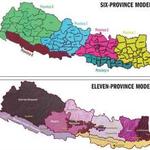Out of poverty with inclusive policy
Nepal consists of more than 100 different castes and ethnic groups. A recent social inclusion survey reveals deep social exclusion, discrimination and immense differences between the different groups. Will Nepal succeed in lifting the poorest castes and ethnic groups in the country out of poverty using inclusive policies?
Nepal is a true patchwork society, consisting of more than 100 different castes and ethnic groups. In recent years, there has been increasing demands for all castes and ethnic groups to be included in the country’s economic and social growth. Nepalese authorities have had to make sure that all groups are represented in the surveys used to measure economic and social indicators to keep track of domestic development progress.
Until now, no national survey or census has provided adequate estimates for social and economic progress among the various small ethnic minorities. The recent Social Inclusion Survey conducted by Yogendra B. Gurung and a team of researchers from Tribhuvan University in Nepal is the first survey to provide reliable estimates for the country’s small population groups.
This survey has been designed specifically to establish social inclusion indicators of all the different caste and ethnic groups based on 2001 census in the country. In addition to measuring poverty, it also provides information on culture and identity, gender, discrimination and everyday life practices. The researchers have acquired an enormous amount of data, making sure that each and every caste and ethnic group is represented by at least 150 separate households. The survey confirms that there are huge differences in social and economic progress between the different castes and ethnic groups, with the Brahmins and Chettry in the highlands as the most affluent groups and the Dalits at the very bottom of society. The Dalits have the lowest literacy rates, score low on education and indicators measuring health and sanitation, and have considerably less money to spend than other castes and ethnic groups.
Trapped in a circle of exclusion
Nepal adopted the concept of social inclusion in 2003. Despite an active stance against social exclusion and discrimination, the new survey shows that the Dalits are discriminated in almost all aspects of development. According to Gurung, they are trapped in a circle of exclusion.
-The economic exclusion they face is due to exclusion from the employment market. Exclusion from the employment market is essentially due to exclusion from the educational sector, and the exclusion from the educational sector largely stems from cultural exclusion, he says.
The Dalits at the very bottom of Nepalese society, the Madhesi Dalits, speak their own language. This is one of the main barriers to inclusion in the educational sector. Schools all over the country use Nepali, which is the only official language.
-The findings show that high proportions of mother tongue speakers in a community give low levels of literacy. And education has a positive correlation with employment and economic opportunity. In conclusion, cultural exclusion is the main obstacle to lift the Madhesi Dalits out of poverty, says Gurung.
Magnus Hatlebakk, senior researcher at CMI, has several years of fieldwork experience from Nepal and cooperates with Yogendra B. Gurung.
-For the majority of castes and ethnic groups in Nepal, poverty numbers have become more equal over the past few years. Yet, the Dalits are clearly lagging behind. Many of them are landless, and among the Madhesi (lowlands) Dalits the majority is landless. Some of them work in factories, but the majority is stuck with casual labour which means that you may go without paid work even for months, he says.
Number of ethnic groups on the rise
The idea of social inclusion was originally developed in Europe in the 70’s as a tool to counter growing indifferences in what was perceived as a class society. Nepalese activist groups adopted the concept, but introduced it into a much more complicated setting.
-It is becoming increasingly important to be identified as belonging to a certain caste or ethnic group, says Gurung and Hatlebakk.
The count of separate castes and ethnic groups in the country has grown ever since the first national plans for social inclusion were introduced. In the 1991 Nepal census, 91 different castes and ethnic groups were identified. In 2011, 125 groups were identified. Gurung and Hatlebakk expects the number to increase further because of two main driving mechanisms; the perception of identity as linked to caste or ethnic group has gained ground for the past ten years. The concept of ethnicity and caste as an identity marker has been firmly established in politics as well as in society.
-The second driving mechanism is affirmative action and the quota policies. Seats in the national parliament, teaching positions at university and 50 percent of the admission to higher education are now also being allocated against the background of caste and ethnicity, says Gurung.
Eager watchdogs
Affirmative action and quota policies are now actively used to ensure participation from different castes and ethnicities in sectors like education, employment and politics. Different castes and ethnic minorities have their organizations taking care of their interests and making sure that the government and other national actors stick to the quota policies.
The affirmative action and quota policy practice has also been debated. Critics argue that the social inclusion agenda is mainly pushed forward by marginal actors with little popular support.
-The critics are gaining resonance, and international donors who used to be eager supporters are slowly starting to back out of the social inclusion agenda, says Hatlebakk.
Yet, affirmative action and quota policies are popular among the Nepalese, and although the excluded Dalits have not yet benefited from affirmative action and quota policies, Gurung sees it as a critical part of the social inclusion agenda.
-It would have been virtually impossible to break the traditional patterns of social exclusion without affirmative action and quotas, he says.
Magnus Hatlebakk
Project

